This is an updated post from 4/6/2022.
More than ever before, order fulfillment, shipping, and delivery matter to consumers. A McKinsey & Company survey found that customers place a high value on items being delivered within the promised window, and that orders are accurate and visible, meaning they can track them. This means that fulfillment now has the power to make or break your business. Done right, an optimized fulfillment process can help you scale your business sustainably while improving your customer experience.
However, a poor ecommerce fulfillment setup can lead to delayed orders, damaged goods, high overhead costs, and unhappy customers. To succeed with ecommerce fulfillment operations while expanding channels, it’s crucial for ecommerce retailers to understand the specifics of order fulfillment, including the various models, options for fulfillment partners, and the best ecommerce fulfillment strategy for growth.
What is fulfillment in ecommerce?
Ecommerce fulfillment is the process of delivering ordered items to a customer safely, accurately, and efficiently. The ecommerce fulfillment process includes inventory management and warehouse management, picking and packing orders, and shipping orders to customers. It also includes reverse logistics (i.e., returns management).
As your brand grows, your ecommerce fulfillment services will need to evolve in sync. Otherwise, you risk being overwhelmed by demand, failing to deliver orders, or mismanaging your inventory, resulting in overstock or stockouts.
Ecommerce fulfillment service models
There are four main types of ecommerce fulfillment, each with its own pros and cons. It’s important to select a fulfillment method that best fits your business model and scale of operations. Selecting the right fulfillment strategy and strategic partners will help keep your operations cost-effective and efficient as you scale.
1. Self-fulfillment
Self-fulfillment, as the name implies, is an ecommerce fulfillment model where retail businesses manage their own order fulfillment operations. This includes storing and managing inventory and picking, packing, and shipping orders. It also means the business is in charge of its reverse logistics and returns processing.
- Pros of self-fulfillment: Self-fulfillment lets online store owners retain full control over their fulfillment processes. Your team will be in charge of managing inventory and fulfilling orders, so you have more active control and can do things such as overstocking popular inventory to prevent shipping delays.
- Cons of self-fulfillment: The biggest drawback of self-fulfillment is that it’s difficult to scale. As your online store grows, your fulfillment team will need to handle more orders and inventory, and may struggle to maintain the same speed and efficiency. Plus, while trying to put out fulfillment fires, the focus is pulled away from other daily operations, product development, and business strategy. In essence, it could end up stagnating your growth. It also means you’ll eventually need to hire more fulfillment staff, and increase your warehousing space, which is costly and not always sustainable.
2. Amazon FBA
Amazon FBA stands for Fulfillment by Amazon. This fulfillment model is a type of outsourcing that Amazon offers to online retailers. In this model, Amazon will manage your order fulfillment services for you – all you need to do is have your inventory sent to their warehouses. However, there are some caveats: Inventory amounts, the length you can store for without penalty, and deadlines for peak season are all realities when dealing with FBA fulfillment. This being said, Amazon fulfills and delivers orders at Amazon speeds. They’ll even manage your reverse logistics and customer service.
- Pros of FBA: Amazon FBA is a reliable, established ecommerce fulfillment that sets the bar high for shipping speeds, so you can trust it to be efficient while providing customer support. Additionally, you’ll also get to use Amazon’s prestigious name to give customers confidence in your ecommerce fulfillment service.
- Cons of FBA: Amazon FBA has stringent requirements for ecommerce businesses, and it’s not ideal for startups. Many young and growing businesses struggle to meet these requirements consistently. There are several ways brands are penalized, from disposal fees for unwanted inventory, fees and surcharges for extended storage, and fees that occur for unplanned services. There can even be low inventory fees. A business has to stay on top of policies–any violations can result in account suspension or termination.
3. Dropshipping
Dropshipping is a fulfillment model where an ecommerce merchant never physically holds or manages inventory. The merchant is also not responsible for fulfilling the orders or processing returns.
These processes are all managed by the manufacturer–in other words, dropshipping ecommerce merchants are effectively middlemen. When customers place orders through the online storefront, the details are forwarded to the manufacturer, who manages the fulfillment service themselves.
- Pros of dropshipping: Dropshipping is a low-cost fulfillment option. Since you don’t have to store your inventory, manage your warehouses, or hire fulfillment experts to fulfill orders, you can keep your operational costs low.
- Cons of dropshipping: Dropshipping involves giving up control over the order fulfillment process entirely. This means you’re solely reliant on the manufacturer, and cannot balance your own inventory levels, prepare for periods of demand surge, etc.
4. Third-party logistics (3PL)
A third-party logistics (3PL) provider is a fulfillment outsourcing service that manages your supply chain and order fulfillment processes for you. Unlike Amazon FBA, 3PL providers are more like partners–they work closely with your business and your team, and they keep you up to date with their processes.
- Pros of 3PLs: 3PL providers can help you scale and grow sustainably. A good 3PL fulfillment partner can help you cut costs and increase fulfillment speed thanks to their network of fulfillment centers, team of fulfillment experts, and advanced logistics technology. Think of the right 3PL service as an extension of your team, offering strategic insights, tools to streamline operations, and the data needed to further optimize fulfillment.
- Cons of 3PLs: Working with a 3PL means you’re relying on the service to manage your logistics and reverse logistics processes. So, it’s a bit of a risk, but mostly due to fit. If you plan on working with a 3PL, it’s crucial to find the right one, a partner that can help you grow sustainably and deeply understands your product and market. Take the time to prepare for your 3PL search and have the right questions in hand before making contact.
How the order fulfillment process works
In general, most orders go through a typical process, including:
- Receiving: The order fulfillment process starts when your team receives products at the warehouse from your suppliers.
- Inventory storage: After receiving the deliveries, your fulfillment team will store them in the warehouse strategically based on your layout and management system.
- Order processing: When the customer places an order, your logistics software should process it. After the order is verified and processed, a picking ticket is generated to guide your fulfillment team. Your team will then pick the required products from the warehouse and pack them for shipping.
- Shipping: The orders are shipped to your customer’s doorstep. Your team may use different carriers depending on the type of order and the destination. Some 3PLs, like Kase, have carrier rate shopping built into their fulfillment platform so that merchants can automate their shipping based on specific parameters.
- Returns processing: When customers aren’t fully satisfied with their orders, they’ll request returns per your returns policy. Processing returns is an important part of maintaining customer satisfaction, and your fulfillment team should make sure shoppers have a hassle-free experience.
Common ecommerce fulfillment mistakes and challenges
Successful ecommerce order fulfillment is crucial to growing your brand and scaling. Unfortunately, many online retailers are still making these preventable mistakes:
Choosing fulfillment centers close to you
Choosing fulfillment centers close to you might sound like a good idea at first, but it’s not beneficial for your customers. When you choose fulfillment centers, it’s essential to pick ones that are close to your customers. This will help you ship orders faster and keep delivery costs low.
Picking rural fulfillment centers to save money
Similar to the previous problem, rural fulfillment centers will drive your delivery times and costs up. Offering customers expedited shipping won’t be possible, severely limiting your ability to offer expedited shipping or free delivery options.
Thinking that warehouses and fulfillment centers are the same thing
Warehouses are establishments for storing inventory long-term, while fulfillment centers hold a portion of your inventory for a shorter period of time until the orders are picked, packed, and shipped to customers. Fulfillment centers are especially useful for inventory management methods such as just-in-time or lean management. So, you might have a couple of large warehouses, but an entire network of fulfillment centers.
Choosing to self-fulfill while the brand is growing
Self-fulfilling as your brand scales can seriously hinder your growth potential. If your team is overwhelmed with orders or if you need to hire more fulfillment staff, many problems can arise.
For example, it can be challenging to find in-house fulfillment teams as employees are often in short supply. It can become more complex during peak seasons as well, when you need additional seasonal help. Then comes the time and cost of onboarding and training. If the work environment is constantly hectic, high turnover occurs, compounding that cost.
In addition to these common mistakes, ecommerce fulfillment comes with many challenges that can hinder your growth as well. Here are some of the most common problems that growing ecommerce brands face:
Seasonal demand is hard to keep up with
Demand can fluctuate dramatically across seasons. For example, demand tends to surge, especially in retail, during the holiday season. As a growing business, it’s difficult to keep up with these demand spikes.
Shortage of time for core duties
Order fulfillment is one of the most demanding parts of running a business. You’ll need to allocate significant time and human resources to manage inventory, fulfill orders, and track logistics operations to guarantee a positive customer experience. Because of this, many ecommerce companies become overwhelmed with fulfillment and cannot focus on other key business areas.
Keeping up with ecommerce giants
Amazon has optimized order fulfillment to the point where the company easily offers expedited shipping without charging consumers premiums for it, including same-day and one-day delivery. Unfortunately, this means that small online business owners are left struggling to compete.
Outdated technology
Many ecommerce fulfillment teams still rely on outdated technology to manage inventory and logistics operations. If your fulfillment software is outdated, you’ll struggle with integrations, real-time visibility, and syncing data across all your channels.
Turn fulfillment into a growth channel
Leverage strong strategies and best practices to streamline fulfillment, creating happy, loyal customers that spur growth. Your optimized post-purchase experience should take these vital steps:
- Locate wisely: The locations of your fulfillment centers can drastically influence your customers’ experiences. If you have a network of strategically placed centers near your key customer bases, you can deliver orders faster and at a lower cost. This leaves room for your brand to offer expedited shipping, free shipping, and flexible fulfillment options.
- Optimize technology and integrations: Fulfillment technology matters more than ever in an omnichannel world. If your products are sold across multiple channels, it’s important to integrate and use the right technologies to sync your data. This way, you optimize inventory management and accurately perform business functions such as demand forecasting.
- Aim to meet current delivery expectations: Offering fast and cost-effective delivery options helps you improve your customers’ experience and stand out from the competition. Keep your eye on surveys that let you know current customer desires: for example, customers may find free shipping more important than speed, but only if the order arrives within the promised window.
- Make returns a hassle-free process: Returns are a part of ecommerce, but you don’t have to lose a customer. But what you can do is provide a seamless, hassle-free returns process to retain customers and strengthen your business.
- Reduce shipping costs with carrier discounts: You might expect some carriers to be superior to others, but in general, there is no clear winner. Some carriers offer better rates for certain shipments, depending on factors such as size, weight, location, and distance. If you’re looking to get the most out of your ecommerce fulfillment, it’s important to work with multiple carriers and identify the best one for each shipment.
Why work with a 3PL
Partnering with a 3PL can streamline your ecommerce fulfillment, reduce costs, and free up your time to focus on business growth. By outsourcing your fulfillment needs, you avoid long-term leases, gain access to expert teams that ensure fast, reliable order processing, and increase operational agility. With the ability to scale up during high demand, a 3PL partner enables you to optimize strategic initiatives like marketing, customer support, and supplier partnerships, helping you grow your brand without the hassle.
Not sure how to choose the right one?
Start by ensuring there are no hidden fees by asking for a clear quote and payment structure upfront. Fast delivery is crucial for staying competitive, so opt for a 3PL that can offer expedited shipping with ample resources to handle large order volumes. A partner with multiple warehouses and fulfillment centers can help reduce costs and speed up deliveries. Lastly, make sure your 3PL integrates seamlessly with your ecommerce platform and sales channels, enabling smoother operations and better decision-making.
Ready to scale up your ecommerce operations? Connect with a Kase expert today and see how streamlined fulfillment can fuel your growth and boost your bottom line.





